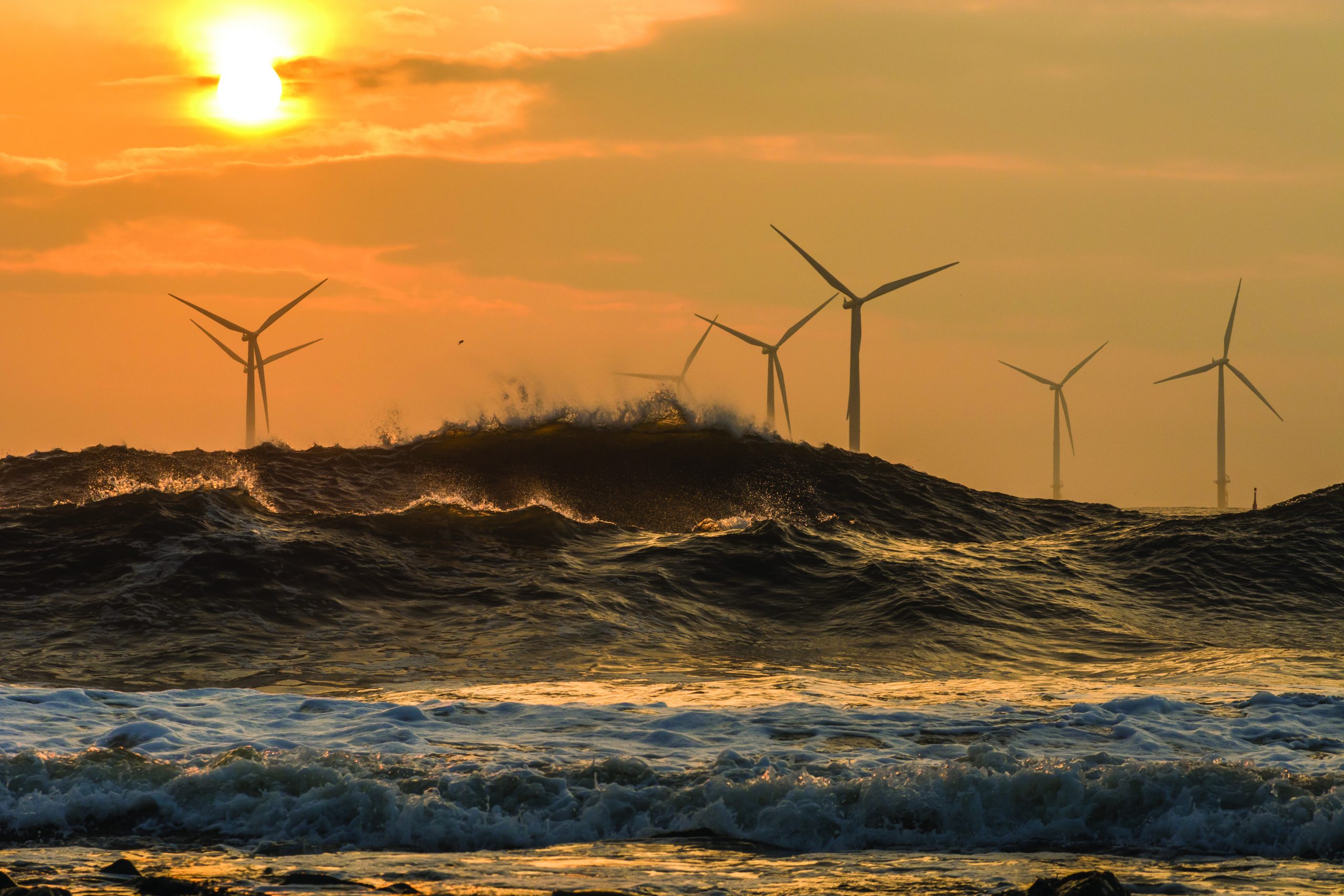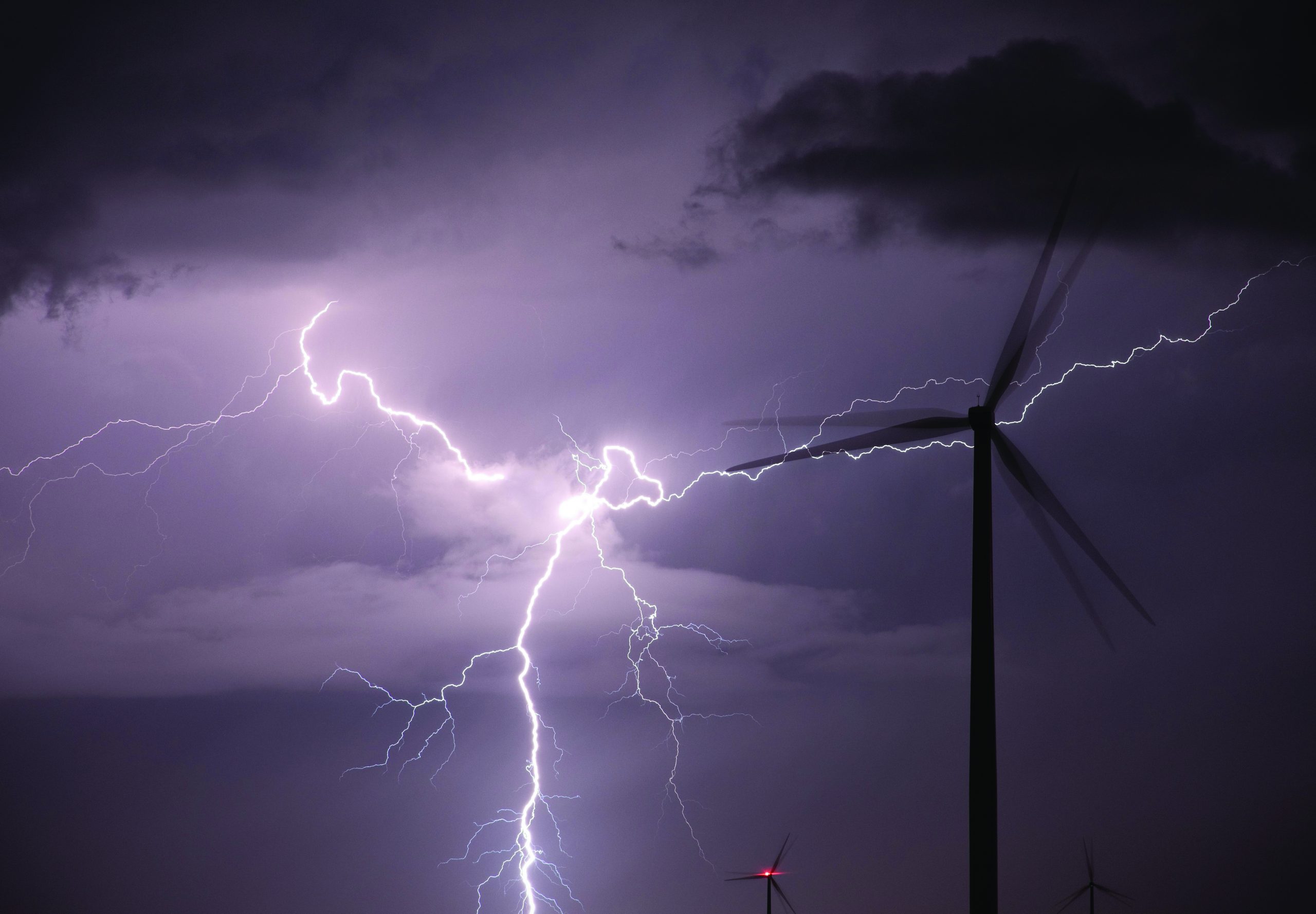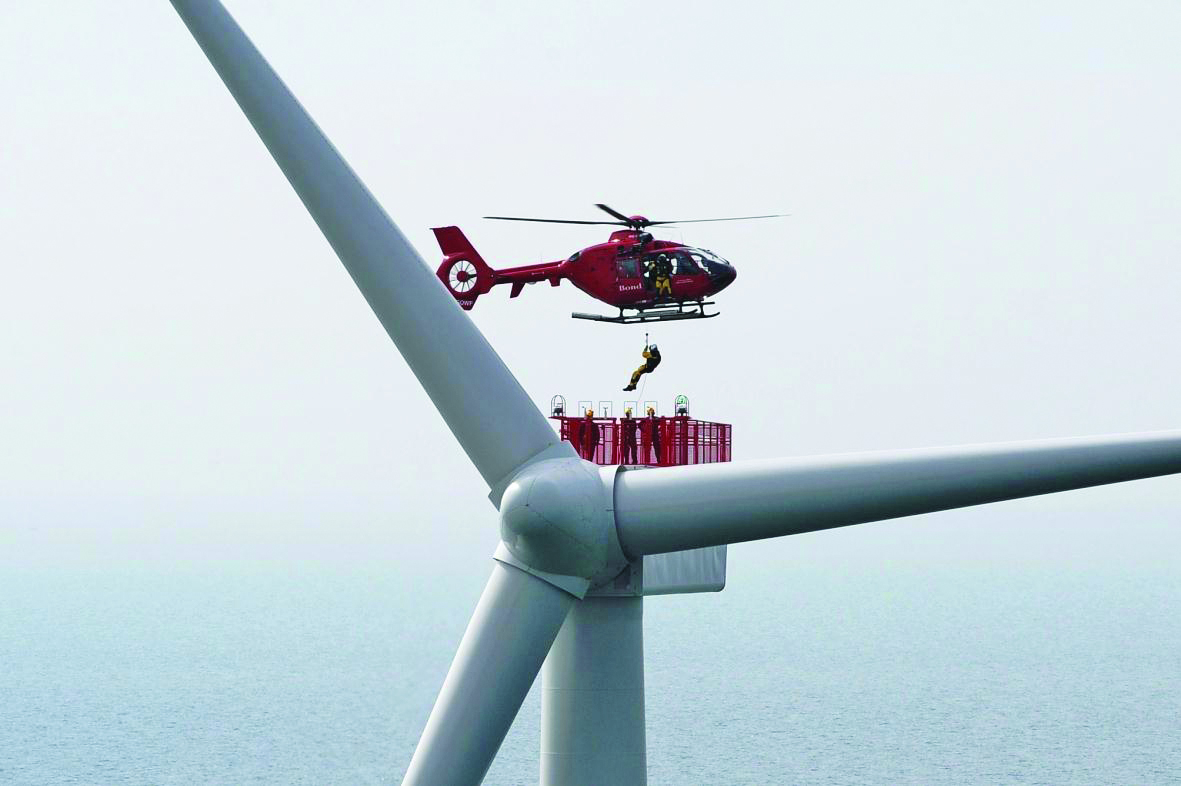Offshore wind development is booming. Following a significant surge in demand for renewable energy and a growing wind-energy market, developers increasingly shift to offshore locations to capture stronger and faster winds. Several European countries already leverage the powerful offshore winds of the North Sea; China connected close to 17 GW of offshore wind capacity to the grid in 2021, and although onshore wind farms are currently more prevalent in the U.S., the country’s future seems to favor offshore wind. The Global Wind Energy Council (GWEC) reports that offshore wind has the biggest growth potential of any renewable energy technology and forecasts that 235 GW of new offshore wind capacity will be installed over the next decade under current policies.
As the industry heads for deeper waters, new challenges emerge for wind-farm operators. In offshore environments, extreme weather and rapidly changing conditions regularly challenge both personnel safety and operational efficiency. To ensure safe operations and avoid costly project delays, offshore wind-farm operators become increasingly dependent on accurate and site-specific data on critical weather parameters.

How the Weather affects Offshore Wind-Farm Operations
Similar to their onshore counterparts, weather plays a significant role in the operations and maintenance of offshore wind farms. In contrast to onshore wind, however, the weather is not only one factor but often the deciding factor when planning, constructing, and operating offshore wind farms. Working in highly unpredictable environments, offshore developers and operators need to collect and understand data on everything from winds, waves, and currents to tidal waters, lightning, and tropical cyclones.
From the complex construction phase to the demanding operational phase, the weather is the main limiting factor for offshore wind operations. First of all, the challenging environment of offshore wind farms creates significant safety hazards for installation and maintenance crews. For example, although strong winds are necessary for successful offshore operations, they can also significantly increase the safety risk for on-site teams working on wind-turbine installation or maintenance. Unlike onshore wind farms, technicians cannot access offshore wind turbines by car but instead require small crew transfer vessels, larger service operation vessels, or helicopters to go back and forth between the shore and the wind farm. Accessing a wind turbine from a helicopter or small vessel during strong winds and high waves is not without risk for technicians.
Another safety hazard is lightning, a particularly challenging weather phenomenon, especially during the summer. As most of us know, it is unsafe to do maintenance work atop a steel wind turbine in the middle of the water when thunderstorms rage and lightning strikes. But, as the saying goes, lightning bolts can appear to hit from the clear blue sky, striking at any time, at any place, and without any warnings. For the unprepared maintenance worker, sudden lightning strikes can be fatal.
Second, the weather directly influences the insurability of offshore wind farms. Potential physical damage, accidents, and natural hazards are not only challenging for offshore wind-farm developers and operators but are also unsettling for insurance companies. To manage weather risks, insurance companies require local, dedicated weather forecasting for all wind-farm projects.
Third, the harsh and severe weather at offshore wind farms may disrupt project development progress and business continuity, first and foremost, because it determines when installation and maintenance teams can access the wind-farm area and wind turbines. For example, high and destabilizing waves can make it next to impossible to load, transport, and install wind turbines during the construction phase. Wind-turbine lifting and installation also require winds below a certain limit at the lifting height — typically above 100 meters. Waiting for safe and suitable weather windows can add costly delays to a project.
As harsh and severe weather challenges both personnel safety and business continuity at offshore wind farms, developers and operators need accurate weather forecasts to understand the challenging environment and efficiently manage optimal weather windows. Especially in the U.S., accurate weather forecasting becomes increasingly important as the offshore wind industry moves into regions strongly affected by hurricanes following the recent greenlighting of wind auctions offshore the Carolinas.

Finding the Right Weather Window
Understanding and managing the weather windows at offshore wind farms is critical to project success. Rely on too optimistic weather forecasts, and you risk having to abort the operation to ensure the safety of your crew. Rely on too pessimistic forecasts, and you risk missing out on working opportunities. Both lead to unnecessary time delays and increased operational costs.
Missing out on a weather window — the ideal time to work on wind-farm installations and maintenance — is costly for offshore wind developers and operators. If the missed weather window occurs during the construction phase when specialized vessels operate in the wind-farm area, installation costs will rise high. In addition, if installation and maintenance crews must return before they have completed their work, costly project delays will occur. Time is money, and lost opportunities quickly translate into lost revenue.
Although the accurate prediction of weather is essential for the safe and timely completion of offshore wind operations, missed or misjudged weather windows are common in the industry — often because of inaccurate weather forecasts. When it comes to offshore wind, general weather forecasts from traditional media outlets are rarely sufficient. Detailed, accurate, and site-specific met-ocean data is required to find the right weather window for offshore wind development and operations.
Advanced Weather Intelligence for Optimized Weather Windows
Offshore wind developers and operators who want to ensure safe and effective operations should consider leveraging advanced weather intelligence platforms from an experienced weather forecaster. Armed with accurate forecasts and trend analyses, offshore wind players are better equipped to increase their confidence when making weather-sensitive operational decisions and ensure they are ready to go whenever a weather window opens.
Experienced wind-farm developers increasingly understand the importance of managing the weather with advanced weather intelligence to improve their offshore operations. For example, accurate and real-time weather forecasting boosts Ørsted’s Block Island Wind Farm in the U.S. The Danish developer relies on precise forecasting to support the maintenance of the turbines, defining weather windows for sailing, accessing turbines, and lifting components.

The American power and energy company Dominion Energy, delivering clean, safe, reliable, and affordable energy to more than 7 million customers worldwide, is another example. The Virginia-based company relies on accurate weather insights to support the daily operations at the wind farm.
What these and many other experienced wind-farm players all have in common is their reliance on weather forecasters to collect and visualize all necessary weather parameters in easy-to-understand dashboards, provide effective long-range forecasting that alerts to weather windows, and help to reduce costs and increase safety from the planning stage to full-cycle project operations.
There is no controlling the weather, but wind-farm developers and operators should try to manage weather windows as accurately as possible. To do so, they should rely on accurate and reliable weather predictions from experienced weather forecasting vendors.
Understand and manage the weather better, and your wind-farm development and operations will become more efficient, experience less downtime, and ensure the safety of installation and maintenance crews on-site.
























